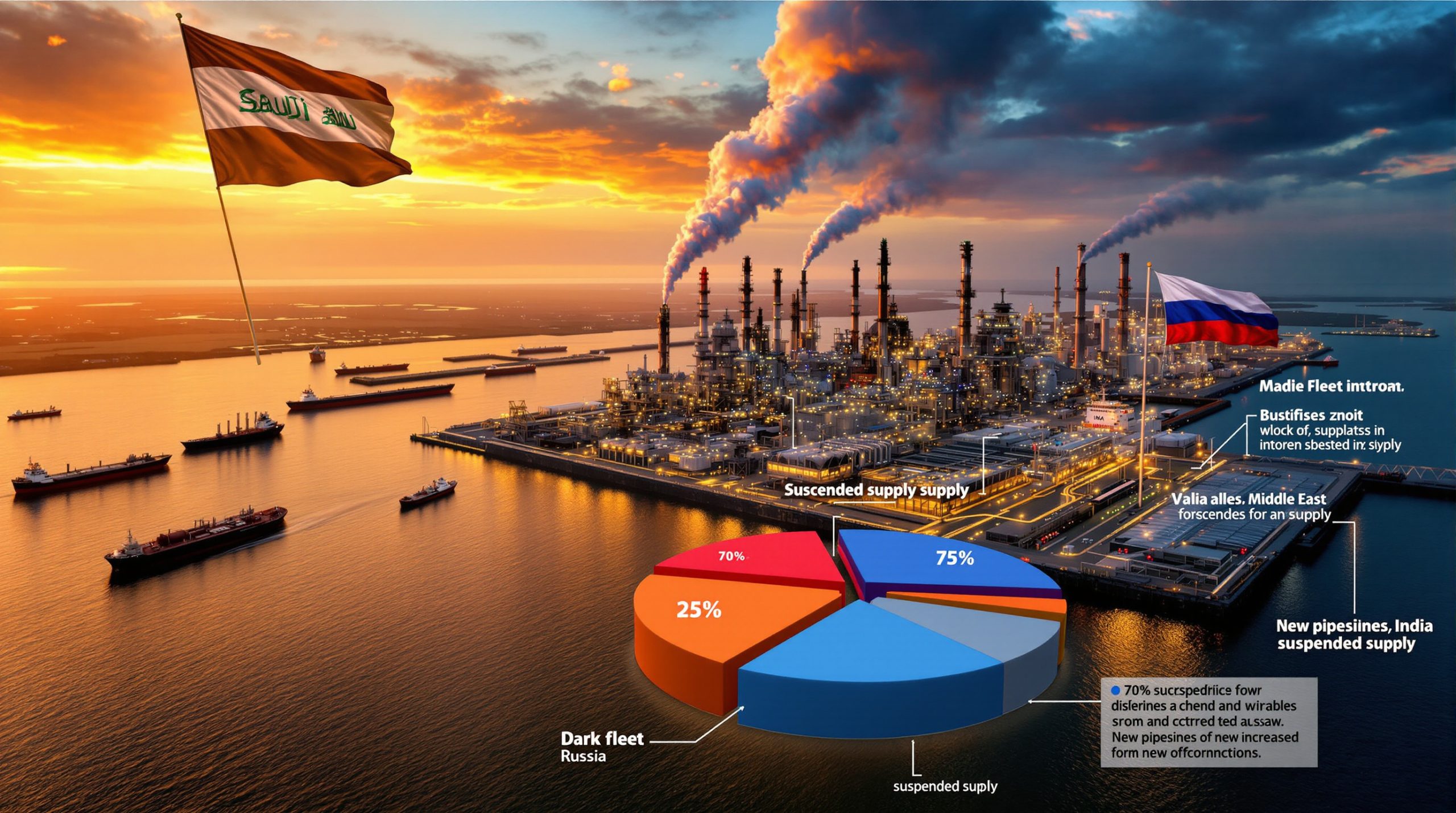What Is Driving the Current LFP Price Increase?
The lithium iron phosphate (LFP) battery market continues to experience significant price movements in 2025, with the latest week showing a notable upward trajectory. LFP prices have climbed approximately 210 yuan/mt this week, marking a continuation of the upward trend observed in previous trading periods. This increase comes alongside lithium carbonate price gains of around 950 yuan/mt, further intensifying the cost pressures throughout the battery supply chain.
The cumulative growth in LFP pricing reflects a complex interplay of market forces, with raw material costs being particularly influential. Industry analysts note that these price movements are not isolated incidents but part of broader supply chain adjustments occurring throughout the battery metals investment sector.
Recent Price Movement Patterns
The current LFP price trajectory can be traced to several key factors. Primary among these is the steady increase in lithium carbonate costs, which directly impacts LFP production economics due to lithium's crucial role in cathode manufacturing. Lithium carbonate typically accounts for 60-70% of the weight in LFP cathode production, making its price fluctuations particularly significant.
According to market data from Shanghai Metal Market (SMM), the price transmission mechanism between raw material inputs and finished LFP products remains highly efficient, with upstream cost increases quickly flowing through to cathode pricing. This relationship has strengthened in recent months as manufacturers work to preserve margins amid volatility.
"The consistent upward movement in lithium carbonate pricing has created persistent pressure on LFP manufacturers, forcing strategic pricing decisions to maintain operational viability." — SMM New Energy Research Team
Key Market Fundamentals Influencing Prices
Several fundamental factors are driving the current price environment beyond simple raw material costs:
-
Supply-side constraints: Production capacity expansions have not kept pace with projected demand growth in certain segments, creating temporary supply-demand imbalances.
-
Quality premium: Higher-grade LFP materials commanding premium pricing due to enhanced performance characteristics.
-
Inventory positioning: Strategic inventory management by major battery manufacturers anticipating continued volatility.
-
Production stability: Major manufacturers have maintained consistent output levels, avoiding disruptive supply fluctuations despite price pressures.
The market sentiment remains cautiously optimistic despite these price increases. Industry participants appear confident that the current price movements reflect fundamental market dynamics rather than speculative activity, providing some stability despite the upward trajectory.
How Is Production Capacity Affecting the LFP Market?
Production capacity dynamics are playing a crucial role in shaping LFP market conditions in 2025. The relationship between installed capacity, utilization rates, and actual output volumes creates a complex ecosystem that influences pricing, availability, and competitive positioning across the battery supply chain.
Current Production Status
Overall production at material factories remained relatively stable throughout the week, with no major disruptions or shutdowns reported. Leading enterprises have maintained steady production rates with slight increases noted in certain facilities. This stability comes despite the challenging raw material cost environment, demonstrating the operational resilience of established manufacturers.
Key production metrics indicate:
- Top-tier producers operating at ~85-90% utilization rates (industry benchmark)
- Consistent production scheduling to maintain supply chain reliability
- Gradual capacity increases aligned with demand projections
- Optimization of existing production lines to enhance efficiency
The production landscape shows a clear differentiation between market leaders and smaller manufacturers. Established producers with advanced production technology and stronger supply chain integration have demonstrated greater resilience to cost pressures, while maintaining higher utilization rates and more consistent output volumes.
Manufacturing Efficiency Considerations
Manufacturers are increasingly focused on operational efficiency as a strategic response to cost pressures. Several approaches are evident across the industry:
- Process optimization: Implementing advanced production technologies to reduce energy consumption and material waste
- Scale economies: Leveraging larger production volumes to distribute fixed costs
- Supply chain integration: Developing closer relationships with raw material suppliers to secure favorable pricing
- Production planning: Aligning output volumes with projected demand to avoid costly inventory accumulation
"Top-tier producers are prioritizing operational stability while gradually increasing output in response to market signals. This balanced approach reflects cautious optimism about demand growth while acknowledging ongoing cost challenges." — SMM New Energy Research Team
Production capacity utilization remains optimized for current market conditions, with manufacturers carefully balancing the need to maintain market share against the risk of oversupply. This strategic approach to production planning reflects the industry's growing maturity and sophistication in responding to market signals.
What Are the Current Demand Trends in the LFP Market?
Demand patterns in the LFP market are undergoing significant shifts in 2025, creating both challenges and opportunities for industry participants. The overall trajectory remains positive, with projected growth in July, but this headline figure masks important sectoral divergences that are reshaping market dynamics.
Diverging Demand Patterns
The most notable feature of current demand trends is the growing divergence between application segments. While overall demand is expected to see growth in July 2025, this growth is not evenly distributed:
-
NEV (New Energy Vehicle) sector: Orders are projected to decrease this month, representing a softening from previous strong performance. This slowdown reflects changing subsidy environments, increased competition, and potential consumer hesitation amid economic uncertainties.
-
Energy Storage Systems (ESS) segment: Showing robust performance and emerging as a key growth driver. The ESS segment benefits from ongoing grid modernization projects, renewable energy integration initiatives, and growing utility-scale deployments.
This divergence represents a significant shift from previous market patterns where NEV and ESS demand typically moved in parallel. The decoupling of these segments introduces new complexities for manufacturers in production planning and market positioning.
Several factors contribute to the strong ESS performance:
- Grid-scale projects under China's 14th Five-Year Plan (2021-2025)
- Accelerating renewable energy integration requiring storage solutions
- Declining battery costs making storage more economically viable
- Evolving regulatory environments supporting storage deployments
Tender Activities and Market Response
Recent battery cell manufacturer tenders have proceeded smoothly, providing important signals about market demand and pricing expectations. These tender processes have become a central topic in market discussions, with outcomes serving as key indicators of procurement confidence and pricing tolerance.
The tender landscape reveals several important trends:
-
Volume stability: Tender volumes remain consistent with previous periods, suggesting steady underlying demand despite sectoral shifts.
-
Price sensitivity: Increased focus on competitive pricing, reflecting the challenging cost environment.
-
Specification evolution: Growing emphasis on performance metrics beyond basic energy density.
-
Contract duration: Tendency toward shorter commitment periods, indicating uncertainty about future pricing.
Bidding strategies increasingly reflect manufacturers' positioning for H2 market share, with some participants willing to accept tighter margins to secure volume commitments. This competitive dynamic underscores the strategic importance of tender participation despite potential margin pressures.
"Market demand has begun to diverge. Orders in the NEV market are expected to decrease this month, while ESS demand is performing well." — SMM New Energy Research Team
The continued strength in tender activities despite mixed demand signals suggests underlying confidence in the medium-term market outlook, even as participants navigate current challenges.
How Will Market Conditions Evolve in H2 2025?
The outlook for LFP market conditions in the second half of 2025 points to an increasingly competitive landscape shaped by evolving demand patterns, capacity expansions, and strategic positioning by key industry participants. Understanding these emerging dynamics is crucial for stakeholders navigating this complex market environment.
Price Competition Outlook
Industry analysts project intensifying price wars in the second half of 2025 as manufacturers vie for market share in a changing demand landscape. This competitive pressure is already evident in current tender activities, with aggressive pricing strategies emerging as manufacturers position themselves for the remainder of the year.
Several factors contribute to this competitive outlook:
- Capacity additions: New production lines coming online increasing available supply
- Demand uncertainty: Mixed signals creating strategic challenges for manufacturers
- Margin preservation: Manufacturers seeking volume to maintain operational scale
- Market share positioning: Strategic focus on maintaining or expanding presence
The price competition is likely to manifest differently across product segments, with standard LFP materials facing more intense pressure than specialized high-performance formulations. Manufacturers with diversified product portfolios may be better positioned to navigate this challenging environment by balancing volume in competitive segments with margin in specialized applications.
"Based on the information currently available, it is expected that price wars will intensify in H2." — SMM New Energy Research Team
Supply-Demand Balance Projections
The supply-demand balance is expected to evolve in complex ways during H2 2025, with several key trends emerging:
- Moderate overall demand growth: Continuing but at a more measured pace than previous periods
- Regional variations: Significant differences in demand strength across geographic markets
- Sectoral divergence: Continued strength in ESS offsetting potential NEV weakness
- Supply chain adjustments: Ongoing recalibration to accommodate shifting demand patterns
The market is likely to maintain overall stability despite these dynamic conditions, with supply expansions generally aligned with demand growth. However, temporary imbalances may emerge in specific market segments or regions as the industry adjusts to evolving conditions.
Supply-Demand Outlook by Segment (H2 2025)
| Segment | Demand Trend | Supply Response | Balance Outlook |
|---|---|---|---|
| Standard LFP | Stable | Increasing | Potential oversupply |
| High-performance LFP | Growing | Limited expansion | Tight balance |
| NEV Applications | Moderating | Adjusting | Balanced |
| ESS Applications | Strong growth | Targeted expansion | Slight undersupply |
These projections suggest a nuanced market environment requiring careful strategic navigation by all participants. Manufacturers with flexible production capabilities and diversified customer bases will be better positioned to adapt to these evolving conditions.
What Factors Are Influencing LFP Market Stability?
Despite price movements and changing demand patterns, the LFP market has maintained relative stability in 2025. This resilience reflects several underlying factors that provide structural support to the market even amid evolving conditions.
Raw Material Price Impact
The continued lithium carbonate price increases create significant upstream cost pressure that ripples through the entire supply chain. The approximately 950 yuan/mt increase in lithium carbonate prices has direct implications for LFP production economics given lithium's substantial contribution to overall material costs.
Key aspects of raw material price dynamics include:
- Price transmission efficiency: Cost increases flow through the supply chain with minimal delay
- Producer absorption capacity: Varying ability to absorb cost increases without full price pass-through
- Alternative sourcing strategies: Exploration of different lithium sources and grades
- Contract structures: Evolution of pricing mechanisms in supplier agreements
Raw material cost management remains critical for manufacturers' profitability in this environment. Leading producers are implementing sophisticated sourcing strategies and exploring technical innovations to mitigate the impact of rising input costs while maintaining product quality and performance.
Market Sentiment Indicators
Overall market sentiment provides important context for understanding current stability despite price pressures. Several sentiment indicators suggest underlying confidence in market fundamentals:
- Tender participation: Strong engagement in recent tender processes
- Production planning: Continued investment in capacity and capability
- Strategic positioning: Focus on long-term market share rather than short-term margins
- Industry communications: Messaging emphasizing growth opportunities despite challenges
"Overall, the recent LFP market has mainly focused on tenders as the main topic of discussion, with moderate demand and relatively stable market conditions." — SMM New Energy Research Team
Industry participants are particularly focused on tender activities as key market indicators, with outcomes providing important signals about pricing expectations, volume commitments, and competitive positioning. The generally smooth progression of recent tenders suggests underlying market stability despite the challenging cost environment.
The cautious optimism regarding H2 2025 performance reflects confidence in the market's ability to navigate current challenges while capitalizing on ongoing electrification trends across multiple application segments. This balanced outlook provides important support for market stability even amid evolving conditions.
FAQ: LFP Market Dynamics
What is causing the recent price increases in the LFP market?
The recent price increases in the LFP market are primarily driven by rising lithium carbonate costs, which have increased by approximately 950 yuan/mt. This upstream cost pressure is being transmitted through the supply chain, resulting in LFP price growth of around 210 yuan/mt.
The price transmission mechanism functions efficiently in the LFP supply chain due to:
- Lithium carbonate's significant contribution to overall production costs (60-70% of cathode materials)
- Limited short-term substitution possibilities for lithium in LFP chemistry
- Competitive market conditions requiring cost pass-through to maintain margins
- Transparency in pricing throughout the supply chain
Manufacturers are implementing various strategies to manage these cost pressures, including process optimization, strategic sourcing, and specification adjustments, but the fundamental relationship between lithium carbonate and LFP pricing remains strong.
How is the demand for LFP batteries expected to change in coming months?
Demand patterns are becoming increasingly divergent across application segments. While the NEV sector is expected to see decreased orders in July, the energy storage systems (ESS) segment is performing strongly. This sectoral shift is creating a mixed but overall positive demand outlook.
Key demand trends to monitor include:
- NEV market: Potential slowdown reflecting changing subsidy environments and consumer sentiment
- ESS applications: Continued growth driven by grid modernization and renewable integration
- Industrial applications: Steady demand from specialized equipment manufacturers
- Regional variations: Different growth trajectories across geographic markets
The overall market impact of these diverging trends depends on the relative size and growth rates of each segment, with the strong ESS performance currently offsetting potential weakness in the NEV sector.
What market trends should LFP industry participants monitor in H2 2025?
Industry participants should closely monitor several key trends that will shape market conditions in H2 2025:
- Intensifying price competition: Manufacturers positioning for market share may accept compressed margins
- Tender activities: Outcomes providing important signals about volume and pricing expectations
- Sectoral demand shifts: Continuing divergence between NEV and ESS applications
- Raw material pricing: Particularly lithium carbonate movements affecting input costs
- Capacity expansion timing: New production lines affecting supply-demand balance
- Technical innovation: Performance improvements enabling new applications
- Policy developments: Regulatory changes affecting target markets
These interconnected trends will collectively determine market conditions and competitive positioning as the industry navigates the evolving landscape in the second half of 2025.
LFP Market Outlook: Key Considerations
As industry participants position themselves for the remainder of 2025, several strategic considerations emerge as particularly important for navigating the evolving LFP market landscape.
Strategic Positioning Opportunities
The changing market dynamics create both challenges and opportunities for strategic positioning:
- Application diversification: Manufacturers adapting to diverging demand patterns between NEV and ESS sectors can reduce exposure to segment-specific fluctuations
- Technical differentiation: Developing enhanced formulations for specific applications enables premium positioning
- Supply chain integration: Strengthening relationships with raw material suppliers can improve cost competitiveness
- Operational flexibility: Developing agile production capabilities enables rapid response to changing market conditions
Price competitiveness is becoming increasingly important for market share retention, particularly in standard product segments. However, manufacturers must balance price aggression with margin preservation to maintain financial sustainability amid cost pressures.
Operational efficiency improvements are critical for maintaining margins amid price pressures. Manufacturers are implementing various approaches:
- Advanced process automation to reduce labor costs
- Energy efficiency initiatives to address production costs
- Yield optimization to maximize material utilization
- Quality control enhancements to reduce rejection rates
Risk Factors to Monitor
Several risk factors require careful monitoring as the market evolves:
- Lithium carbonate pricing volatility: Potential for continued fluctuations affecting input costs
- Intensifying price competition: Risk of margin compression below sustainable levels
- Demand uncertainty: Potential for forecast revisions affecting production planning
- Technical disruption: Emergence of alternative chemistries affecting competitive positioning
- Policy changes: Regulatory developments impacting target applications
"The interconnected nature of these risk factors requires integrated monitoring and response strategies to navigate effectively." — SMM New Energy Research Team
The following table summarizes key market aspects, current status, and outlook for the remainder of 2025:
| Market Aspect | Current Status | Outlook |
|---|---|---|
| LFP Pricing | Increasing (+210 yuan/mt) | Competitive pressure expected |
| Lithium Carbonate | Rising (+950 yuan/mt) | Continued cost pressure |
| NEV Demand | Stable with expected decrease | Declining in short term |
| ESS Demand | Strong performance | Continued growth expected |
| Production | Stable with slight increases | Cautious expansion |
| Market Competition | Moderate | Intensifying in H2 2025 |
This market overview highlights the complex interplay of factors shaping the LFP landscape. Successful navigation requires sophisticated understanding of these dynamics and agile response capabilities as conditions evolve throughout the remainder of 2025.
Further Exploration
For readers seeking deeper understanding of LFP market dynamics, several resources provide valuable additional insights:
- Industry Reports: Shanghai Metal Market's analysis reports offer detailed market data and expert interpretation
- Technical Publications: Academic and industry research on LFP chemistry advancements
- Market Intelligence Services: Subscription data services tracking pricing, capacity, and demand trends
- Conference Proceedings: Industry events featuring presentations on market developments
These resources can support more informed decision-making amid the complex and evolving market conditions expected in the second half of 2025. Additionally, recent developments in battery recycling breakthrough technologies and the establishment of a new [battery-grade lithium refinery](https://discoveryalert.com.au/news/battery-grade-lith
Want to Stay Ahead of Major ASX Lithium Discoveries?
Discovery Alert's proprietary Discovery IQ model provides real-time notifications when significant mineral discoveries are announced on the ASX, giving you immediate insights into potential investment opportunities before the broader market reacts. Visit our discoveries page to see how historic mineral discoveries have generated substantial returns for early investors.




